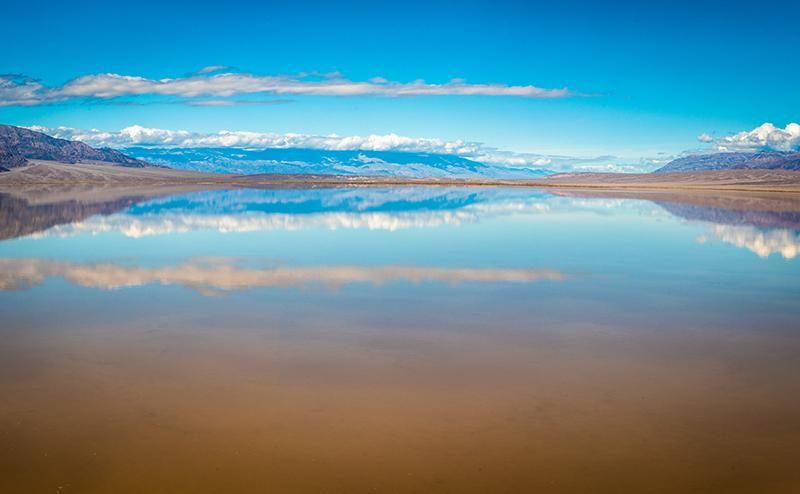Flooding Creates a 10-Mile-Long Lake in Death Valley
The rare ephemeral lake was caused when the compacted, dry desert soil wasn’t able to absorb the .87 inches of rain that recently fell on the national park
/https://tf-cmsv2-smithsonianmag-media.s3.amazonaws.com/filer/3f/b2/3fb2390e-dec5-44d6-8d00-a0ce16059eac/death_valley_lake.jpg)
Most of the time, visitors to Death Valley National Park in southern California don’t expect to see much water. The area is the hottest and driest spot in North America. So it was surprising when, after a massive storm last week, a winding 10-mile-long lake appeared in the park.
The shallow body of water was discovered by photographer Elliott McGucken on March 7, reports Amy Graff at SFGate.com. After the storm moved through the area, McGucken was planning to visit Badwater Basin to take some photos, hoping that an ephemeral lake had formed in the area. But he couldn’t reach the spot because the other, larger lake along Salt Creek blocked the way.
It actually turned out to be even better than Badwater Basin. McGucken was able to shoot some once-in-a-lifetime images of the flooding with the surrounding Panamint Mountains reflected in the water. “Nature presents this ephemeral beauty, and I think a lot of what photography is about is searching for it and then capturing it,” he tells Graff.
While it’s difficult to pin down just how large the lake is, the National Park Service estimates that it stretches about 10 miles. “I believe we would need aerial photos to accurately determine the size. From the road, it looks like it stretched from approximately Harmony Borax Works to Salt Creek right after the rain, which is a little less than 10 road miles,” the park said in a statement emailed to McGucken. “But, the road does curve a bit, so it’s not an entirely accurate guess.”
According to Pam Wright at Weather.com, the flooding occurred because on March 5 and 6, the Park received .87 inches of rain, almost three times the average for March. The deluge represents about one-third of Death Valley’s total annual precipitation.
The parched, compacted soil of the desert can be like concrete, and is unable to suck up such a large amount of rain quickly. “Because water is not readily absorbed in the desert environment, even moderate rainfall can cause flooding in Death Valley,” Weather.com meteorologist Chris Dolce explains. “Flash flooding can happen even where it is not raining. Normally dry creeks or arroyos can become flooded due to rainfall upstream.”
Park officials tell Graff the lake is still present, though it is gradually getting smaller.

Sadly, the rains have come too late to power a superbloom in Death Valley, reports the NPS. Superblooms occur when the desert gets above average rainfall at the right time in the winter months, leading to an irruption of desert flowers. Currently, a superbloom, the second in two years, is taking place in Anza-Borrego Desert State Park, the state’s largest, which received the right amount of rain early on. Fields of orange poppies, purple sand verbena, white and yellow primroses and other desert wildflowers are blossoming in unison.
Death Valley experienced a major superbloom in 2005 and it’s latest superbloom was in 2016. Those flowers, however, came with a price. In October 2015, the park experienced the largest flood event in the Valley’s recorded history when between 1 to 2 inches of rain fell over the park. At that time, Badwater Basin, normally a dry lake bed, filled with water. The road to the Scotty's Castle area of the park was closed, and it is still not expected to reopen until 2020.